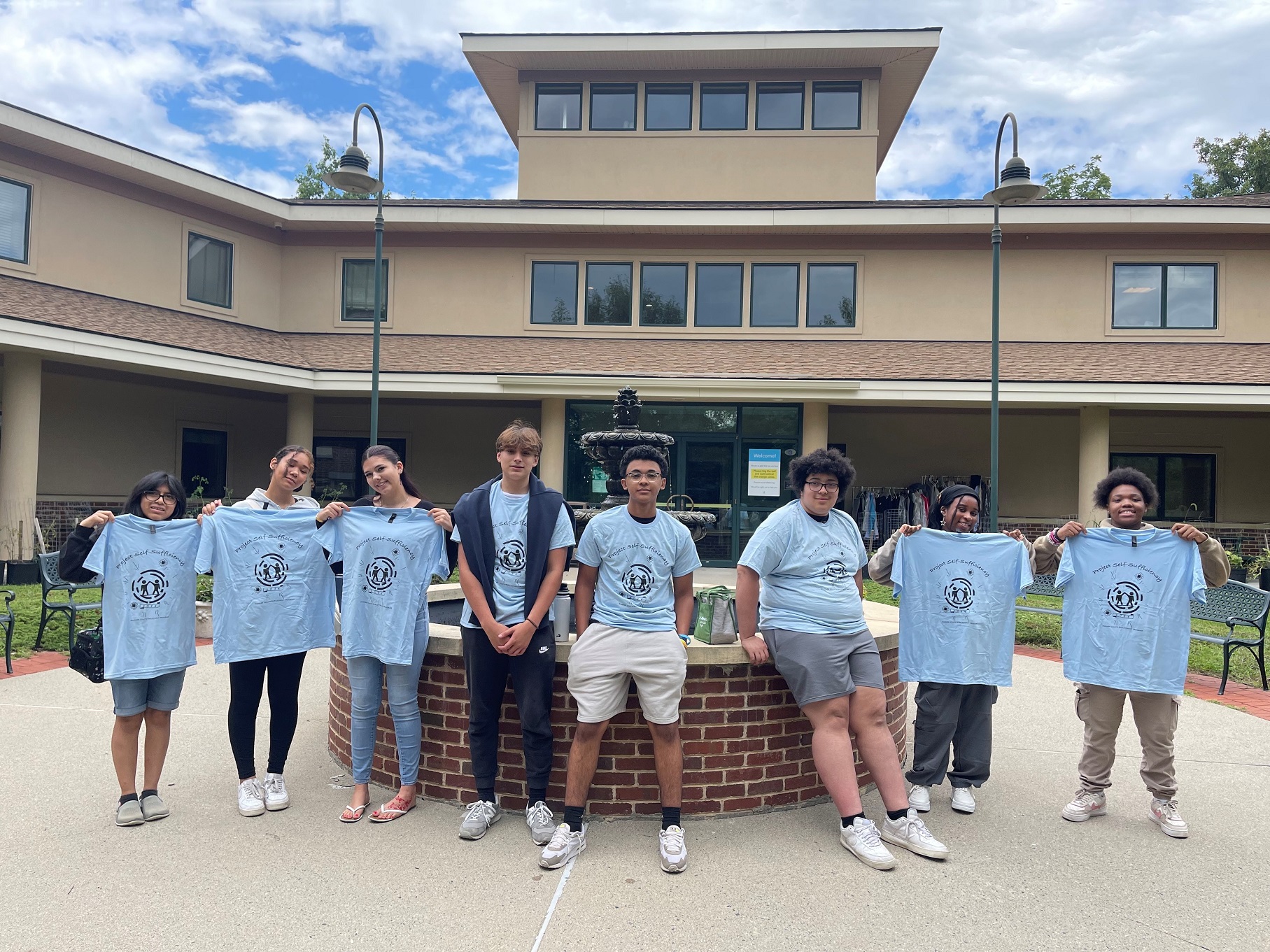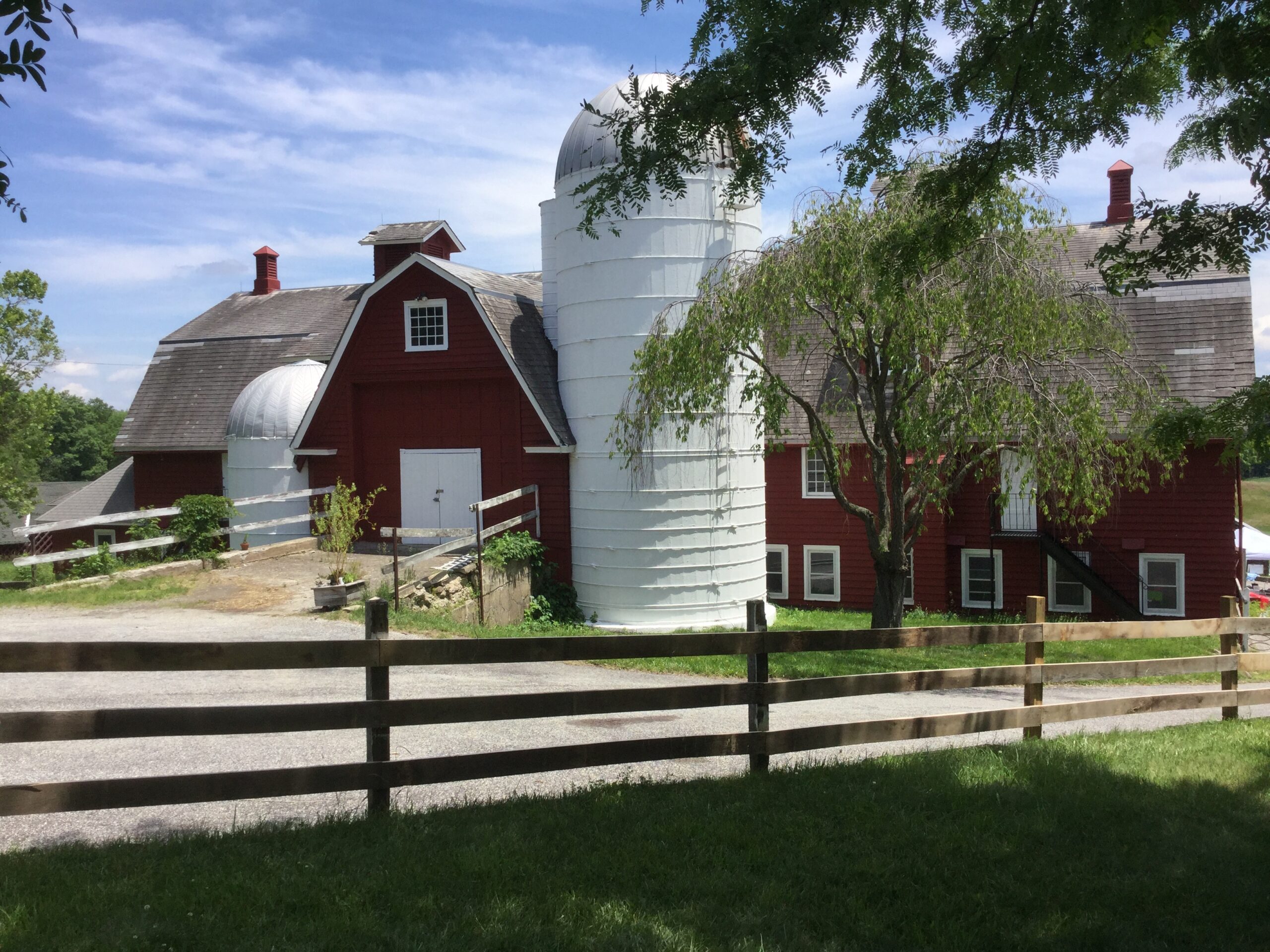Around the beginning of the 20th century, Newton was experiencing a significant growth in its manufacturing base, as well as a steady increase in housing construction.
In 1897, an imposing three story brick manufacturing building was erected on the south side of East Clinton Street, close to the intersection with Townsend Street. This new building had a footprint of 100 feet in width and 50 feet in depth and was to be the home of the Newton Shoe Company. The lot on which the building sits belonged to Virginia M. Southard, and was created shortly after East Clinton Street was laid out and paved.

The three-story manufacturing plans of the Newton Shoe Company, shortly after it was built in 1897. Note the fact that the stairs leading up to the main entrance have not yet been installed, leaving all of the workers having to enter and leave the building through the small shed-roofed brick entryway on the left end of the structure.
The new building had a raised fieldstone foundation with a full basement. The exterior brick walls displayed a common brick bond pattern. All of the windows on the three floors were 6 over 6 double-hung units with brick arched lintels. The window arrangement was 15 bays wide and 7 bays deep. The main entrance was comprised of a pair of raised panel doors, surmounted by a four lite transom. The shallow pitched roof was covered with locally quarried rectangular slate shingles.
Officials for this new company were: Frank M. Hough, president and treasurer; Joseph H. Valentine, secretary; and T. J. Richard, business manager.
Finding it more than difficult to compete with the Merriam Shoe Company in terms of mass production and marketing, the Newton Shoe Company lasted only a few years, officially closing its doors on July 6, 1902.
The manufacturing facility sat empty for three years until 1905 when the Duplex Radiator Company moved in and began the fabrication of gas heaters. Unfortunately, this business venture lasted only two years.
This time the building did not sit idle for very long. In November 1905, the business group of Moser & Wacker, of New York City, announced their intentions to occupy the building with their silk embroidery company. This new occupant, known as the Newton Embroidery Works, was placed under the direct supervision of Jacob Hermann.
In 1910, the firm built a one-story brick addition, in the middle of the back of the building, measuring 51 feet by 26 feet. The new heating plant was located in this addition. The coal fired furnace/boiler produced sufficient steam to heat the entire building and provide power to run the looms. The boiler fed an engine that produced 75 horsepower. This new system also drove two dynamos that supplied sufficient electricity for more than 400 lights.
The first floor contained six embroidery machines, each being 30 feet long. The machines each had one operator who would work a tracer on a pattern that was six times the size of the figure or design being embroidered. This tracing of the pattern guided mechanical needle bars, with each bar containing 680 needles. Each machine also had a shuttle girl working along side of the tracer, with both looking for any problems with the numerous threads being fed to the machines from the multitude of bobbins.
Aside from embroidering rolls of cloth, the company also embroidered ladies’ collars and other ornamental items a woman in the period would wear. Collar patterns were distributed out as piece work for women who wanted to work from their homes.
The second floor contained four hand-powered embroidery machines. The third floor was used for storage of raw materials, bobbins and spare machine parts, packing materials and shipping boxes.
By 1910, the company had grown to include 25 full-time employees.
Jacob Hermann became the sole owner of the Newton Embroidery Works in 1916 as a result of his purchasing the half interest in the company that had belonged to Moses & Wacker.
Hermann leased out the third floor of the building to the Max Hyman Company, of New York City. The lease began in September 1933 with this new company manufacturing silk and rayon underwear. The Max Hyman Company projected that they would employ roughly 50 people.
Around 1940, the embroidery works was no longer in the building, and in April 1941, the B.B. Manufacturing Company took occupancy of the first two floors and advertised for 100 experienced sewing machine operators. The company used Singer Sewing Machines in the fabrication of ladies’ cotton dresses and sportswear.
Ultimately, other manufacturing enterprises came and went over the ensuing 45 years. In 1986, Shanachie Entertainment took occupancy on the third floor. Shanachie Entertainment has for almost fifty years been a leading independent recording company releasing great music by acclaimed—and sometimes legendary—artists in a wide variety of musical genres including R&B, Jazz, Gospel, Blues, Folk, Rock, Alternative and World music. Shanachie owns the building at 37 East Clinton Street.
In December 1997, Custom Wood Furniture occupied the first two floors of the building. This firm, headed by John Kweselait, produces high end custom furniture for homes, offices and institutional clients. This company has grown considerably and presently relocated and expanded a portion of the manufacturing and finishing operations of the company to a site close by. Currently they occupy the first floor of the East Clinton Street building, while Shanachie now occupies the second and third floors.

Wayne T. McCabe, a fifty-year resident of Sussex County, is active in preserving and publishing local history. He serves as President of the Sussex County Historical Society and is a National Park Service qualified architectural historian and a licensed professional planner with 44 years of experience in historic preservation. READ MORE





